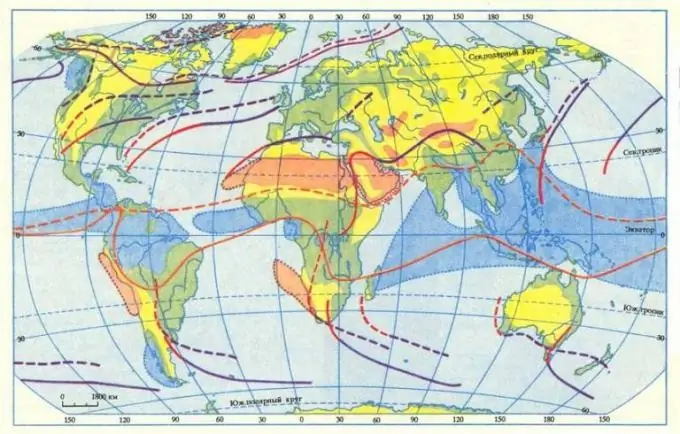The phrase "atmospheric front" has ancient Greek and Latin origins. Literally translated as steam or air front. In other words, the atmospheric front is a narrow strip that is located at the border between air masses with different properties.

Classification of atmospheric fronts
Atmospheric fronts have several different characteristics. According to them, this natural phenomenon is divided into different types.
Atmospheric fronts can be 500-700 km wide and 3000-5000 km long.
Atmospheric fronts are classified by movement relative to the location of air masses. Another criterion is spatial extent and circulation significance. And finally, there is a geographic feature.
Characterization of atmospheric fronts
By displacement, atmospheric fronts can be divided into cold, warm, and occlusion fronts.
A warm atmospheric front forms when warm air masses, as a rule, humid, approach drier and colder ones. The approaching warm front brings a gradual decrease in atmospheric pressure, a slight increase in air temperature and small but prolonged precipitation.
A cold front is formed under the influence of northerly winds, which inject cold air into areas that were previously occupied by a warm front. A cold atmospheric front affects the weather in a small strip and is often accompanied by thunderstorms and a drop in atmospheric pressure. After the front passes, the air temperature drops sharply and the pressure increases.
The cyclone, considered the most powerful and destructive in history, hit the Ganges delta in eastern Pakistan in November 1970. The wind speed reached over 230 km / h, and the tidal wave height was about 15 meters.
Occlusion fronts arise when one atmospheric front is superimposed on another, formed earlier. Between them is a significant mass of air, the temperature of which is much higher than that of the air that surrounds it. Occlusion occurs when a warm air mass is displaced and separated from the earth's surface. As a result, the front is mixed at the surface of the earth already under the influence of two cold air masses. Deep wave cyclones formed in the form of very chaotic wave disturbances are often located at the occlusion fronts. At the same time, the wind increases significantly, and the wave becomes clearly pronounced. As a result, the front of the occlusion turns into a large blurred frontal zone and, after some time, completely disappears.
Geographically, the fronts are divided into arctic, polar and tropical. Depending on the latitudes in which they are formed. In addition, depending on the underlying surface, the fronts are divided into continental and sea.







